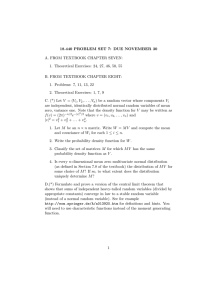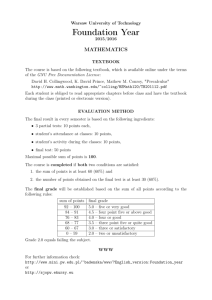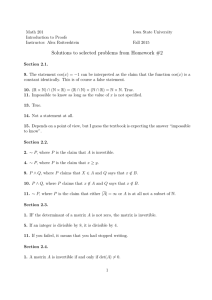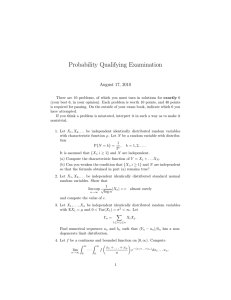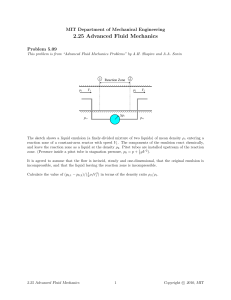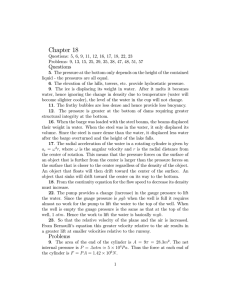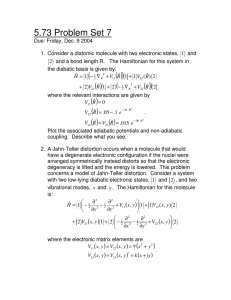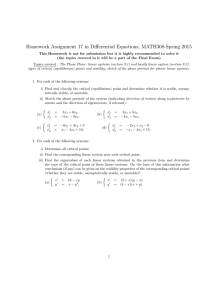18.440 PROBLEM SET 8: DUE NOVEMBER 23
advertisement
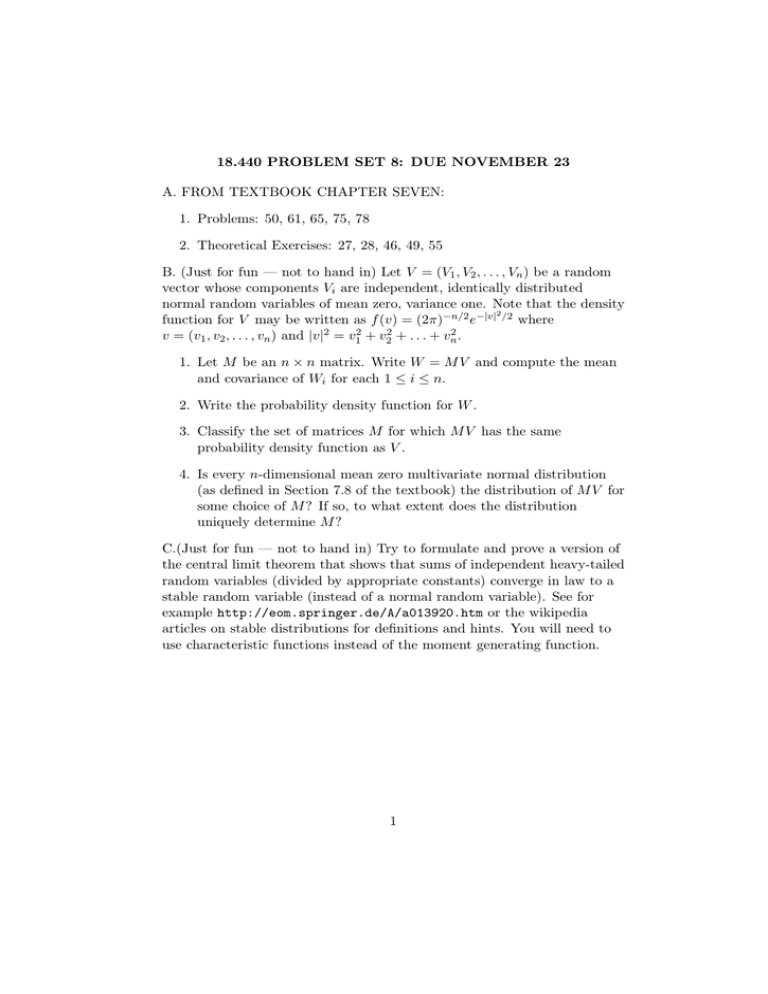
18.440 PROBLEM SET 8: DUE NOVEMBER 23 A. FROM TEXTBOOK CHAPTER SEVEN: 1. Problems: 50, 61, 65, 75, 78 2. Theoretical Exercises: 27, 28, 46, 49, 55 B. (Just for fun — not to hand in) Let V = (V1 , V2 , . . . , Vn ) be a random vector whose components Vi are independent, identically distributed normal random variables of mean zero, variance one. Note that the density 2 function for V may be written as f (v) = (2π)−n/2 e−|v| /2 where v = (v1 , v2 , . . . , vn ) and |v|2 = v12 + v22 + . . . + vn2 . 1. Let M be an n × n matrix. Write W = M V and compute the mean and covariance of Wi for each 1 ≤ i ≤ n. 2. Write the probability density function for W . 3. Classify the set of matrices M for which M V has the same probability density function as V . 4. Is every n-dimensional mean zero multivariate normal distribution (as defined in Section 7.8 of the textbook) the distribution of M V for some choice of M ? If so, to what extent does the distribution uniquely determine M ? C.(Just for fun — not to hand in) Try to formulate and prove a version of the central limit theorem that shows that sums of independent heavy-tailed random variables (divided by appropriate constants) converge in law to a stable random variable (instead of a normal random variable). See for example http://eom.springer.de/A/a013920.htm or the wikipedia articles on stable distributions for definitions and hints. You will need to use characteristic functions instead of the moment generating function. 1
